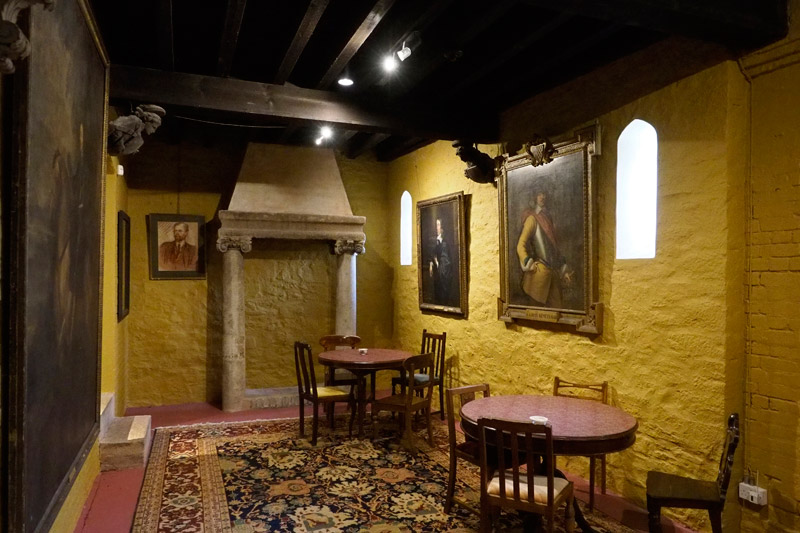The arrangement of shapes and shadows, both bold and fragmentary, drew my eye to this window, wall and especially the sphere with LEDs. It was in Hay on Wye and obviously the latter came into its own (along with several others) after the sun had gone down. During the day multicoloured penants (see below) were the town's chief decoration. However, that ball and its LEDs set my mind wondering. Does the increased number of LEDs used for decorative purposes overwhelm any savings made by the obviously energy-saving substitutions of the newer technology for filament lights? Probably not. But it has to be conceded that LEDs now crop up in places and numbers that we wouldn't have thought possible when they first came into use.
photo © T. Boughen Camera: Lumix FZ1000 2



















